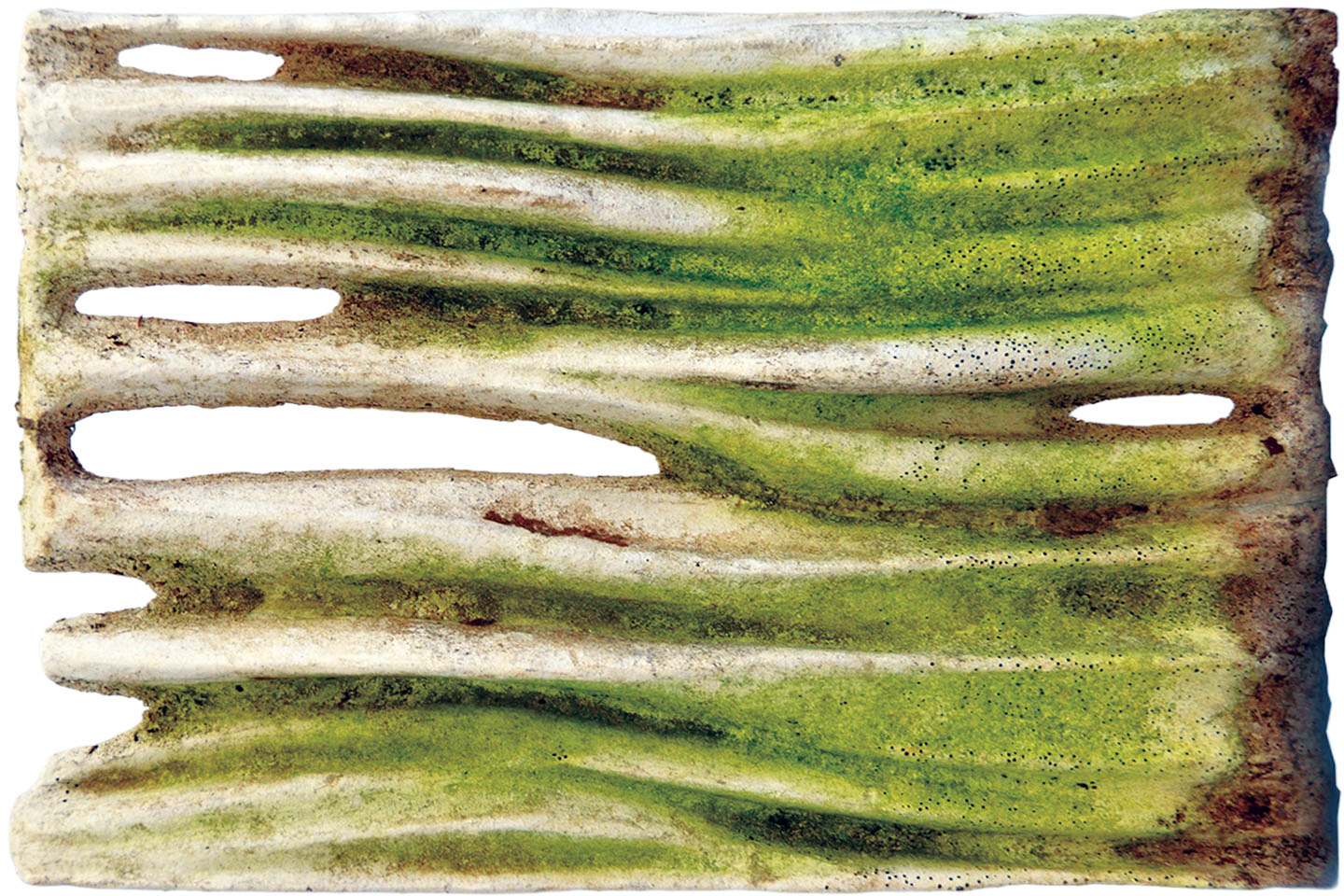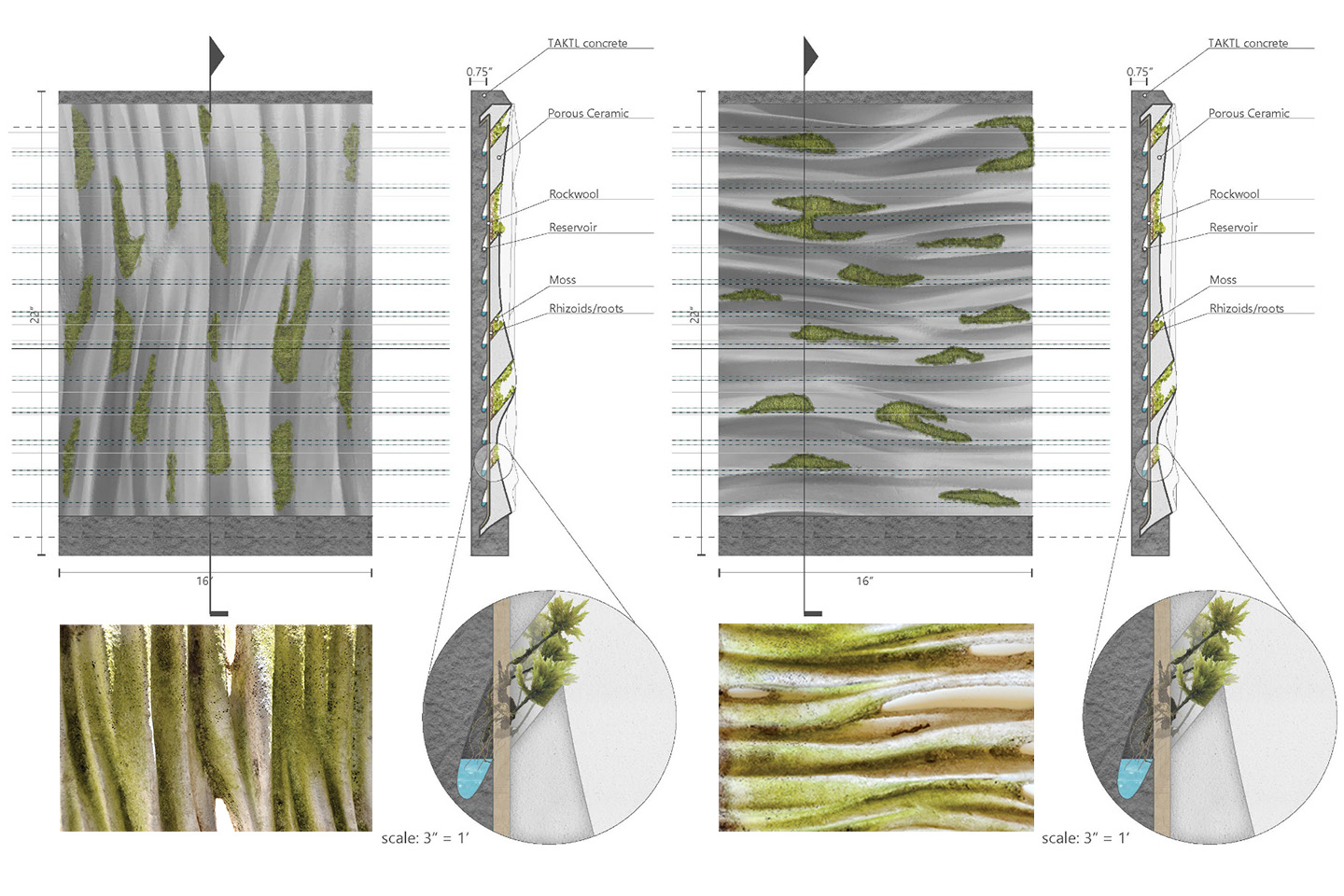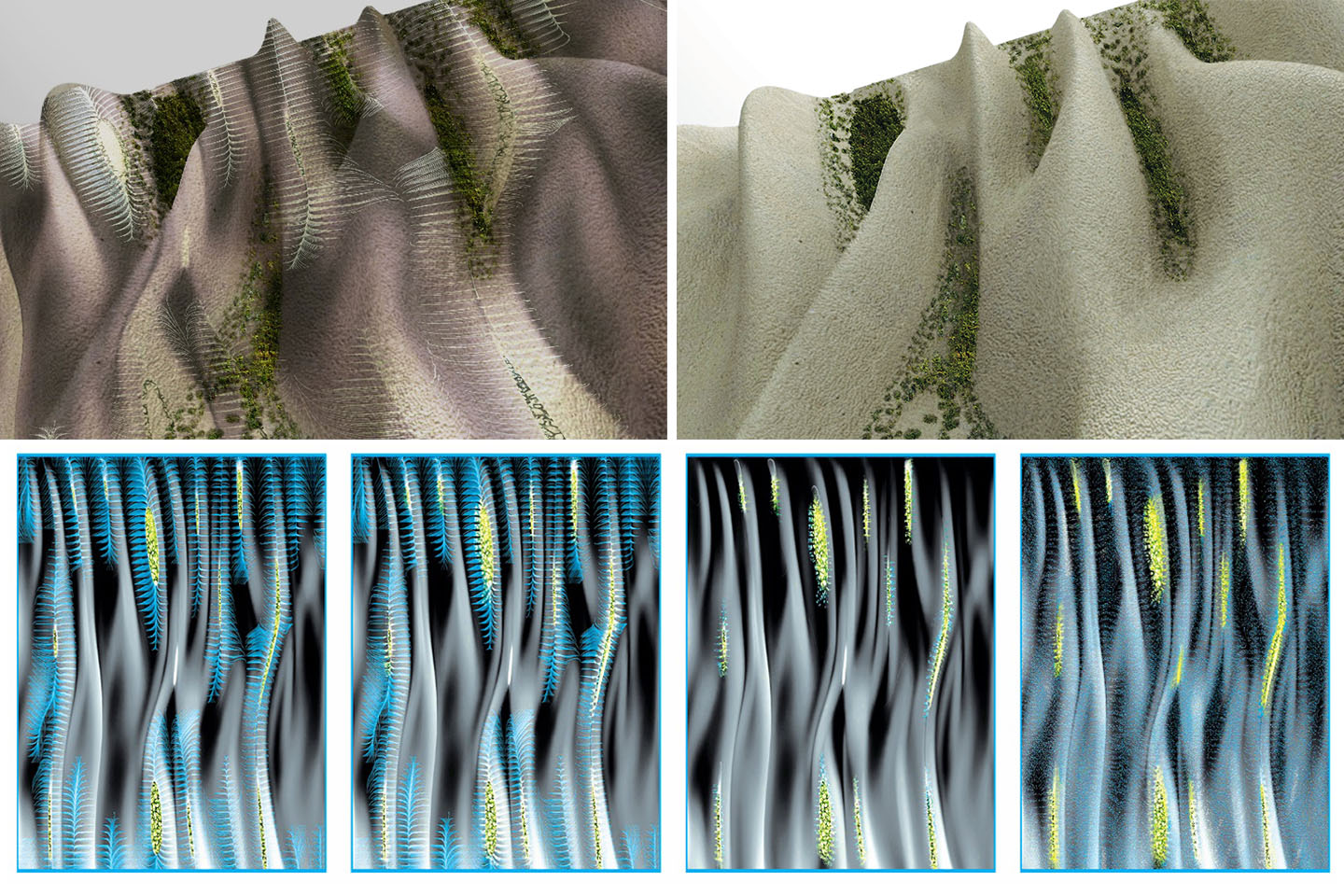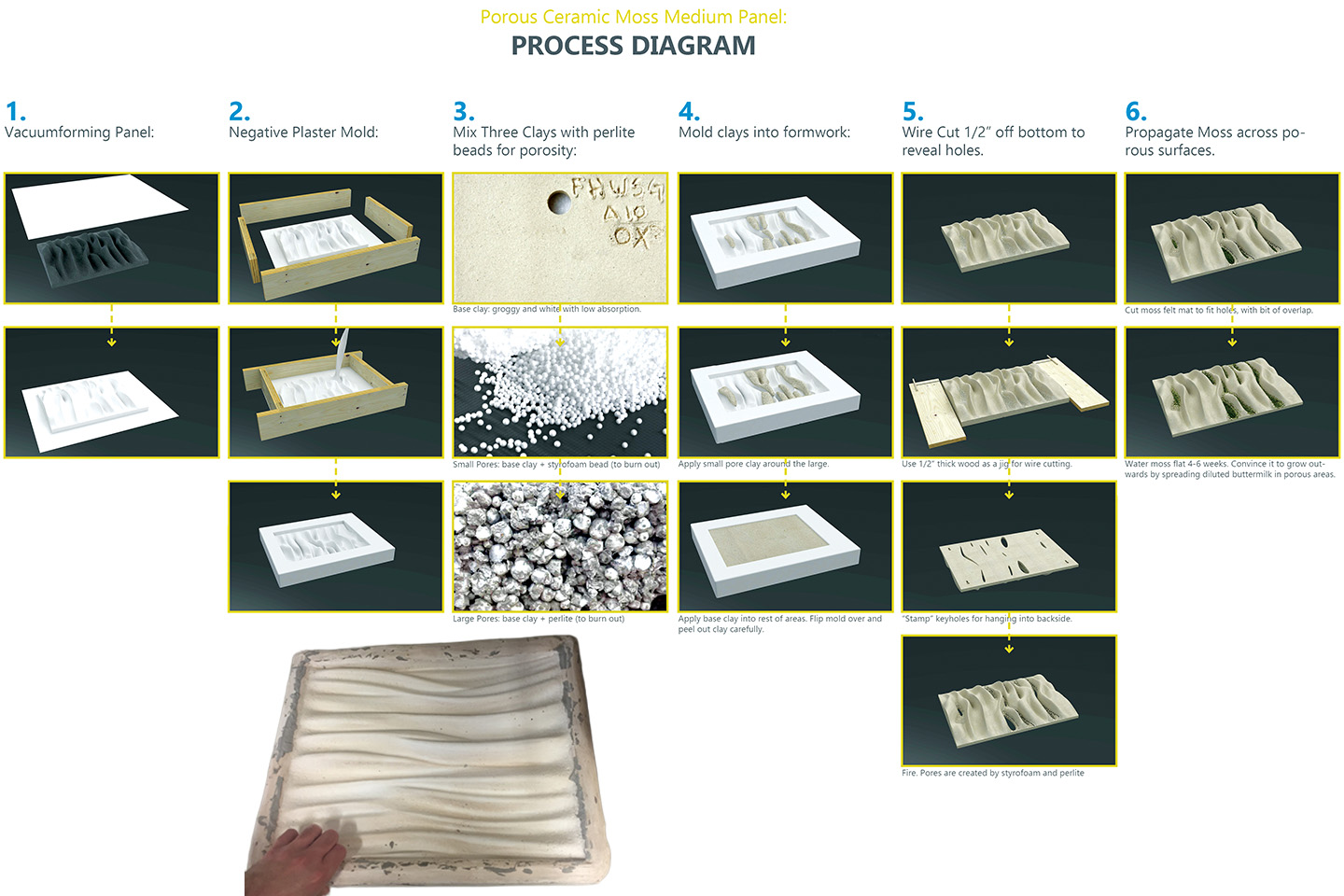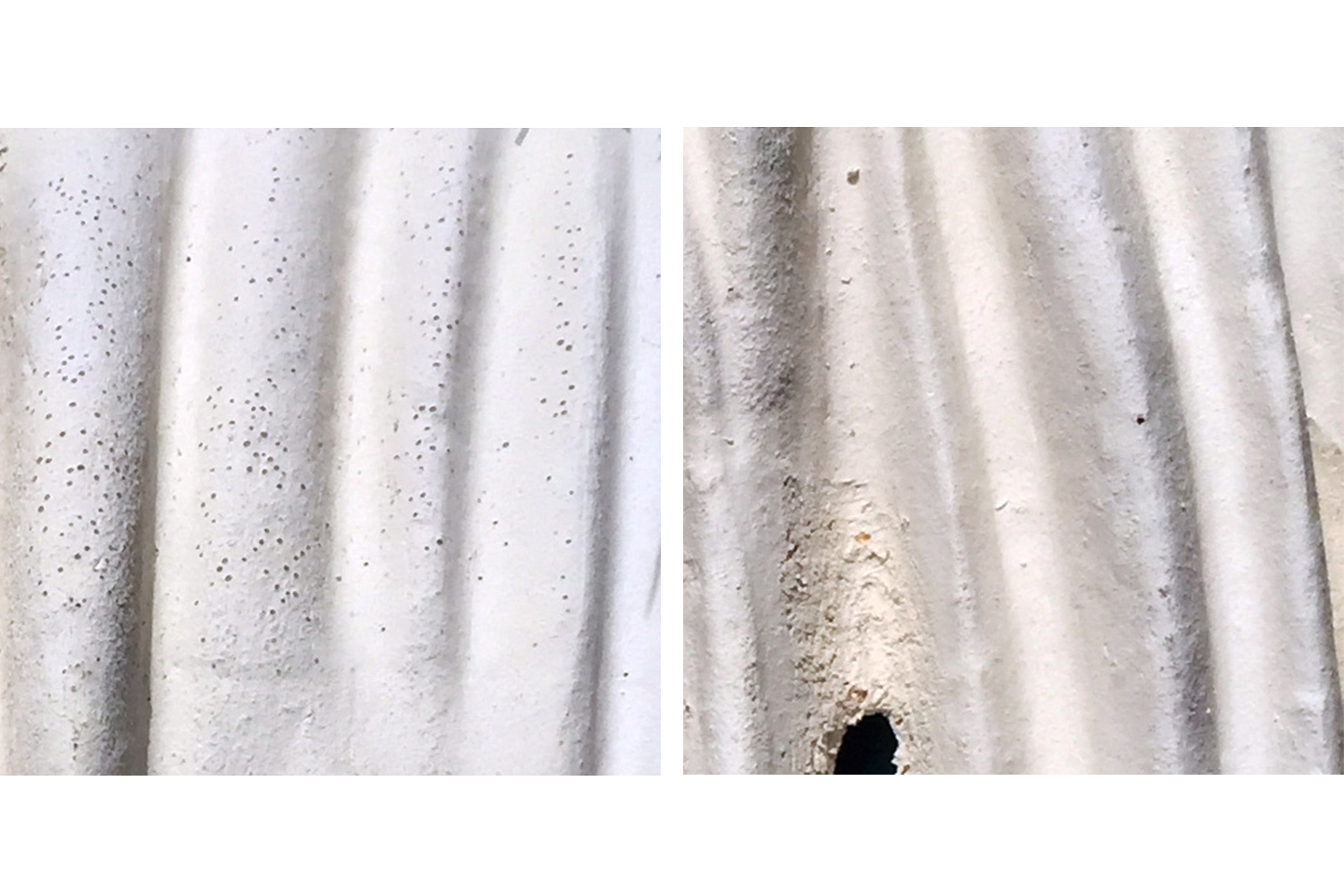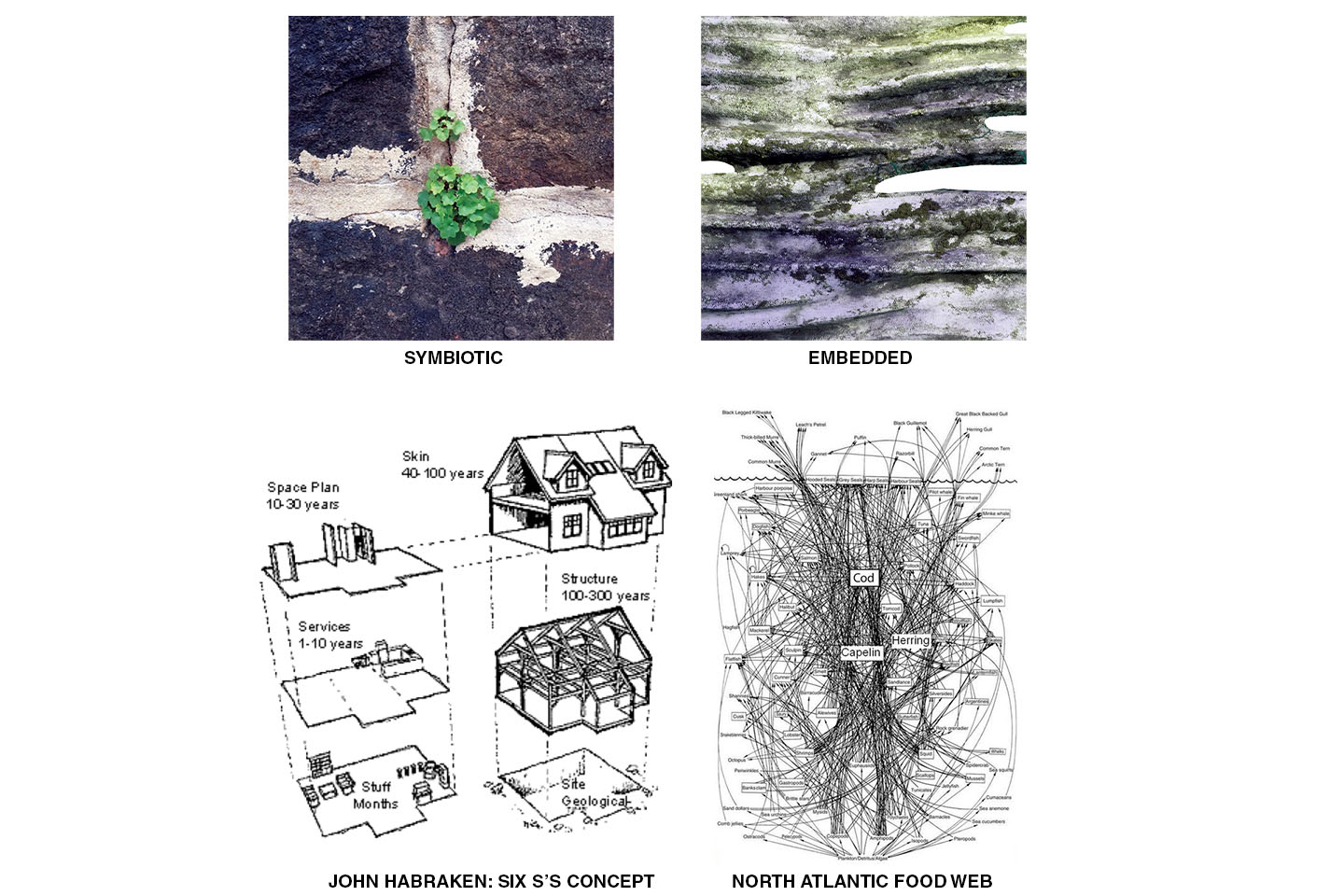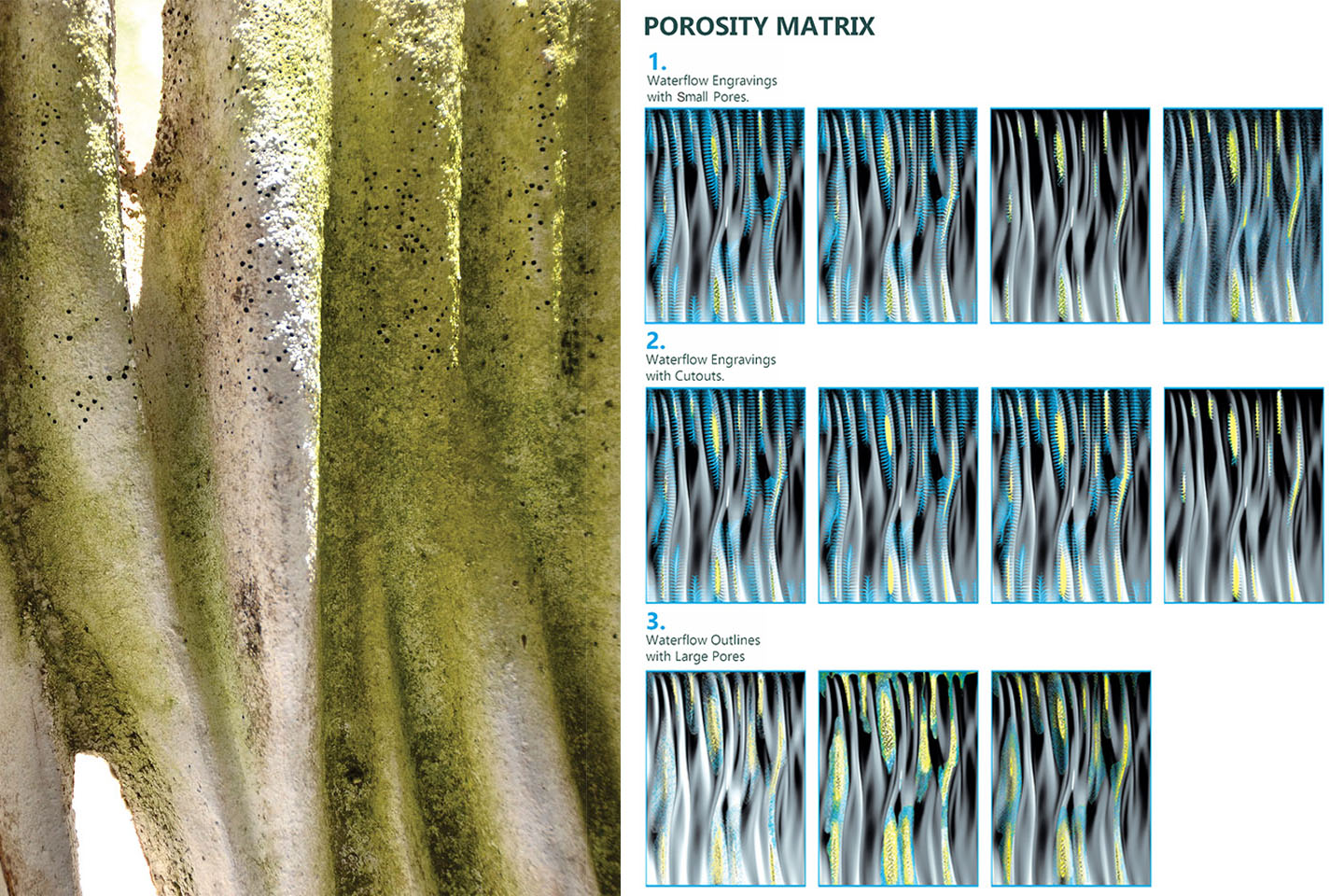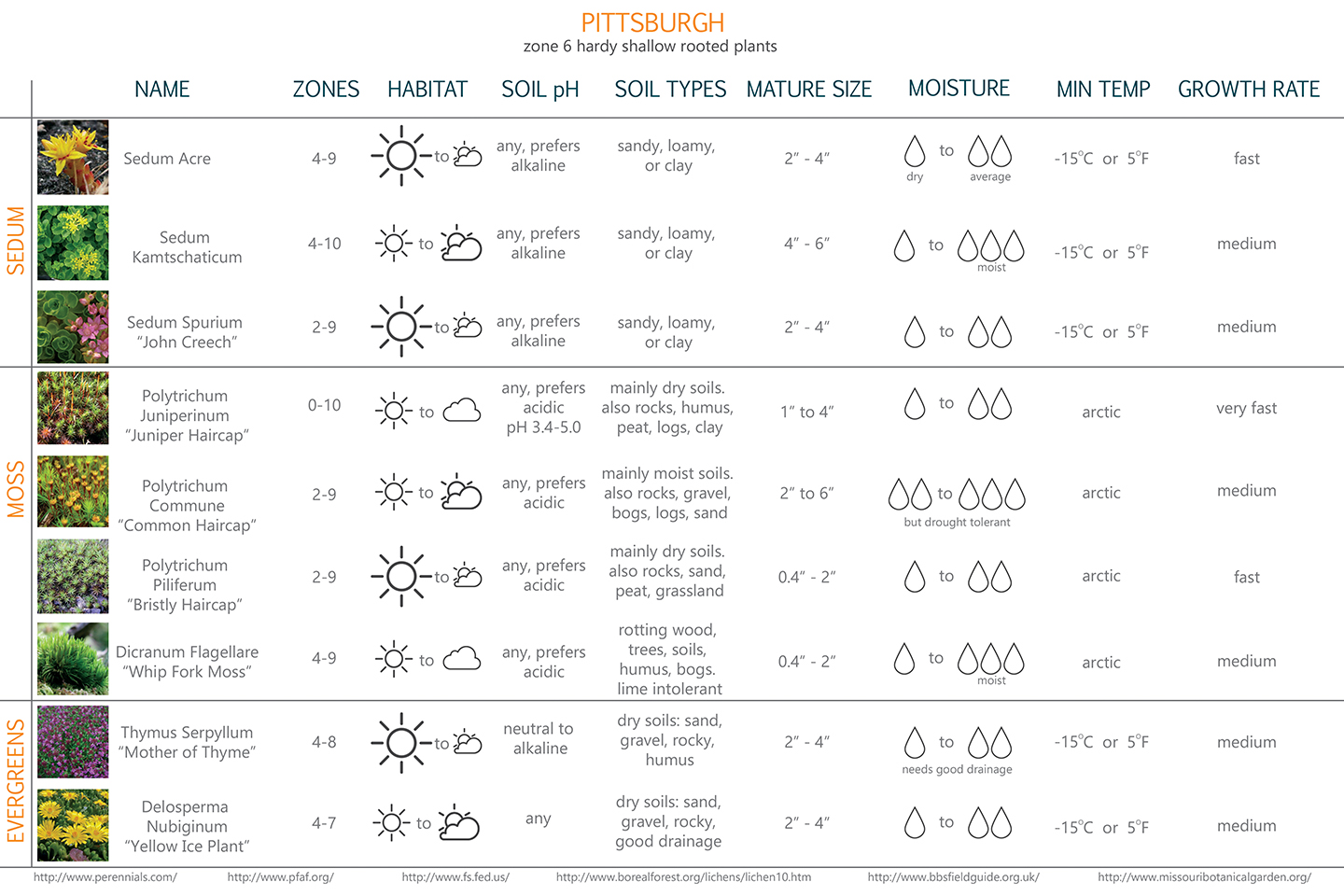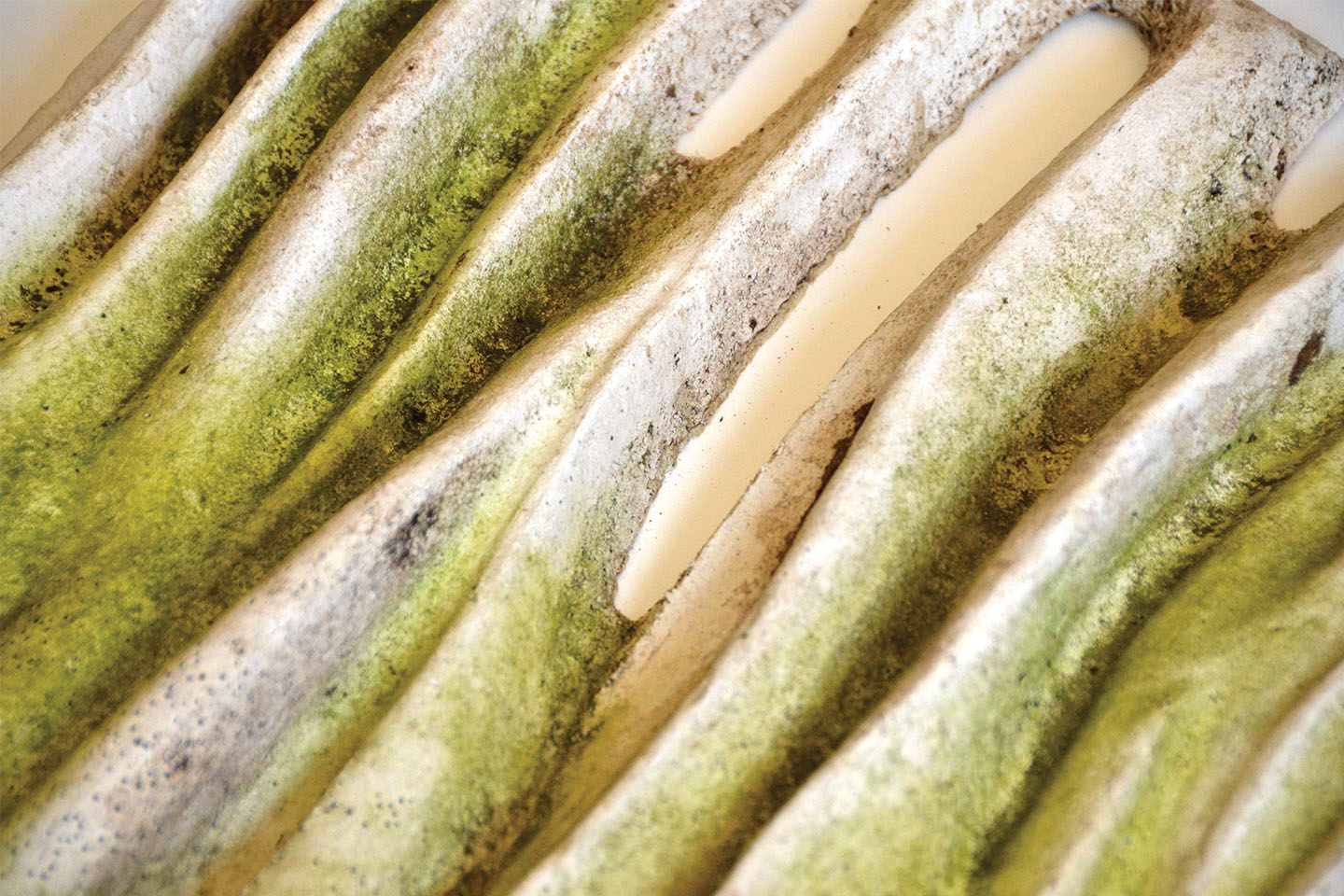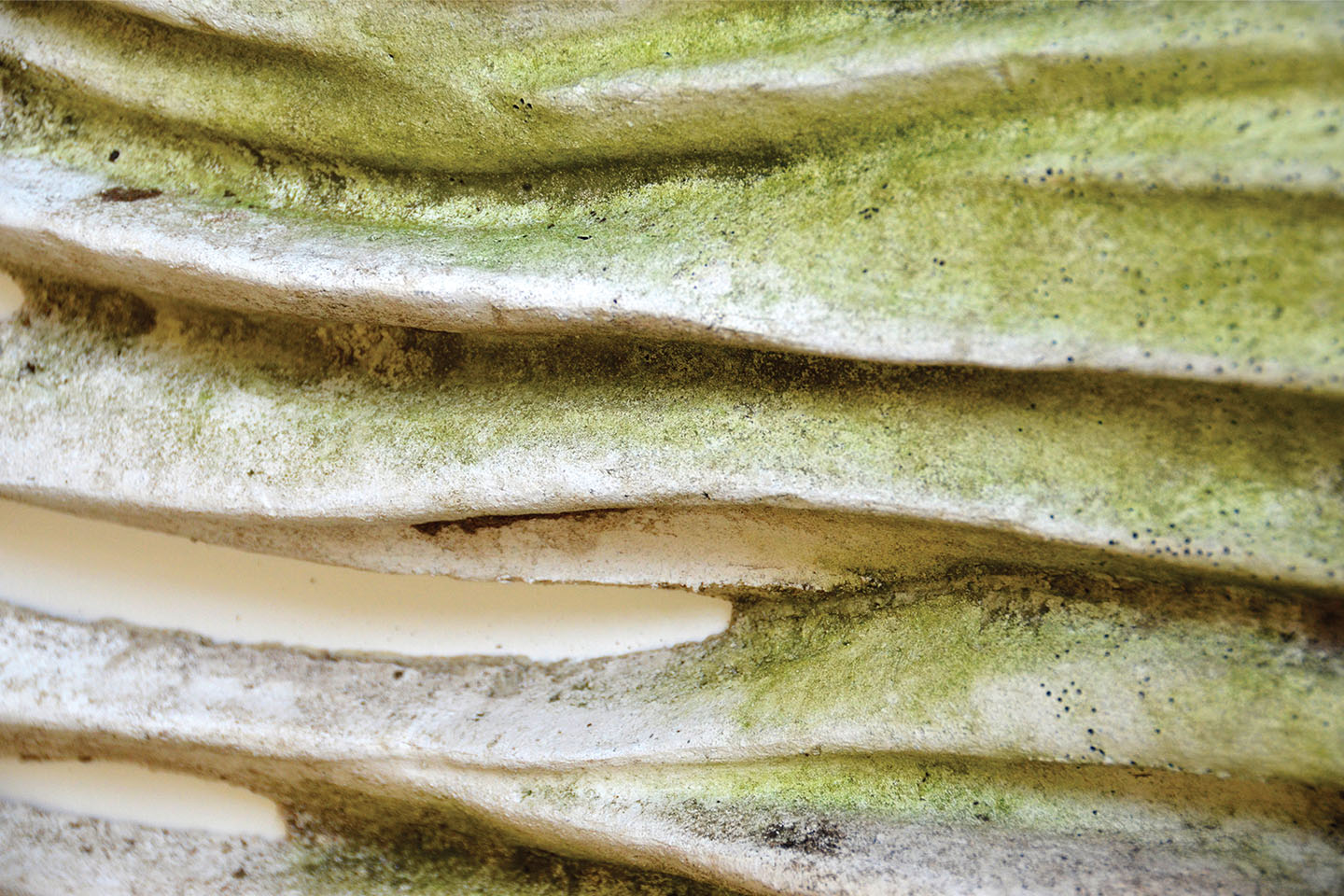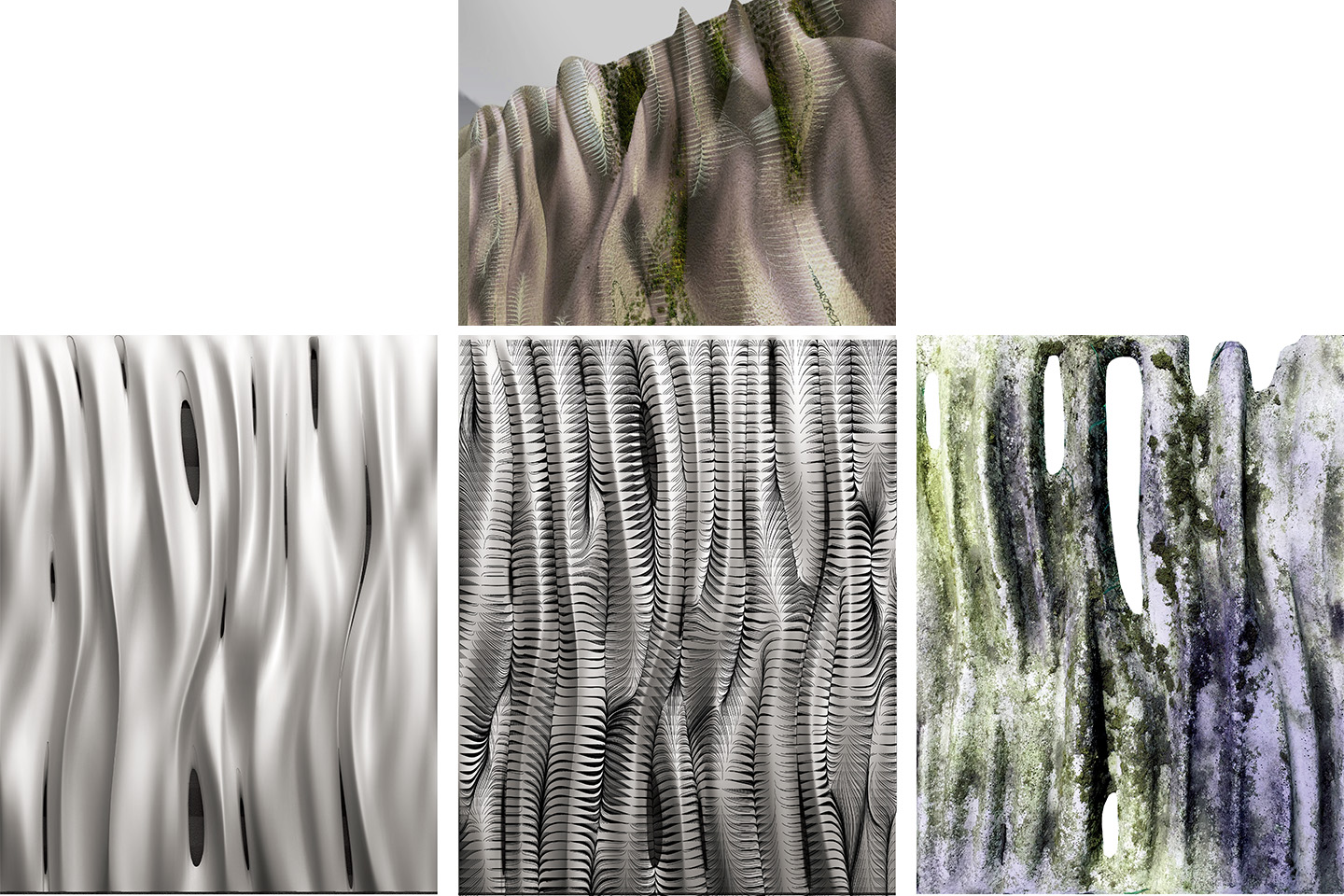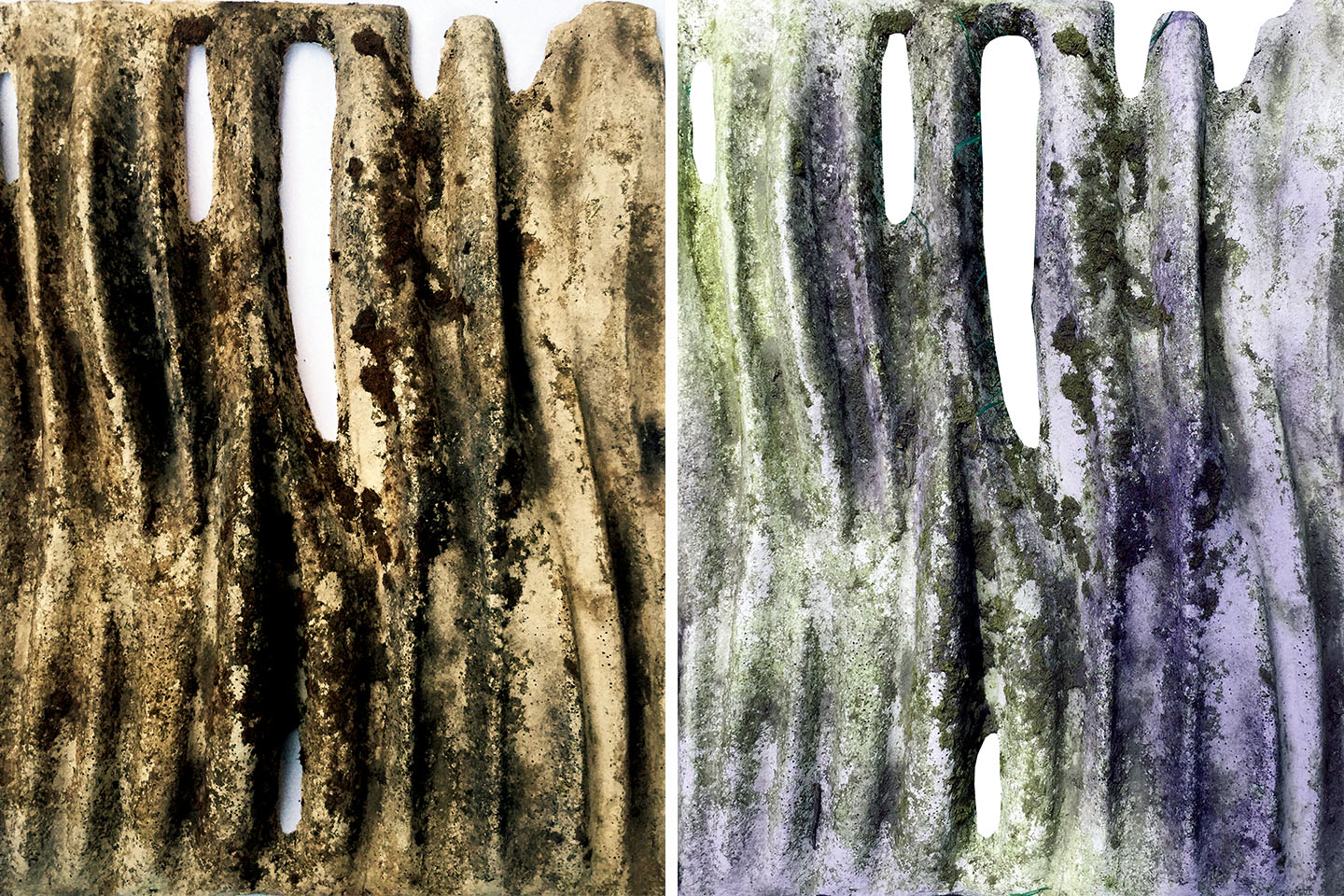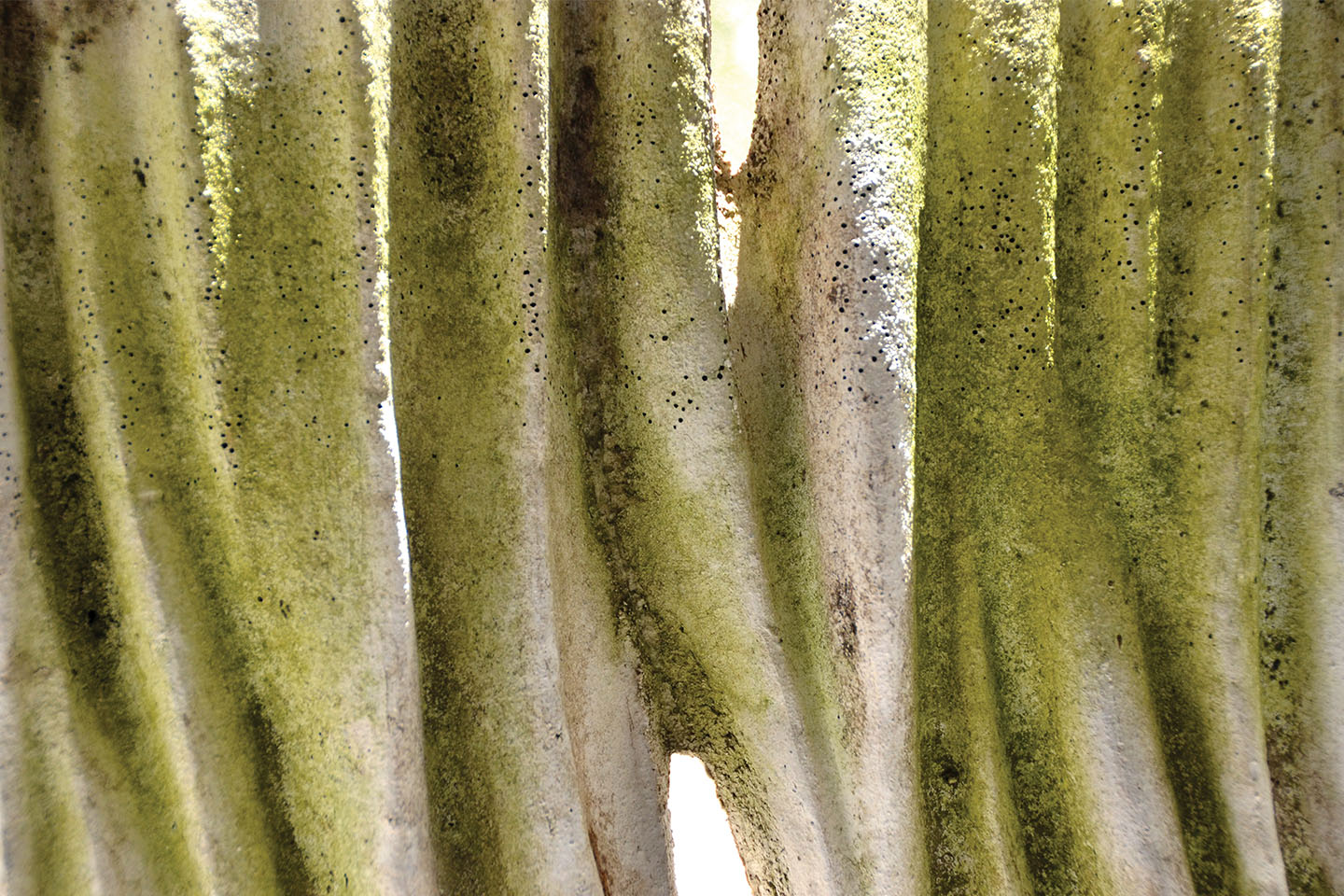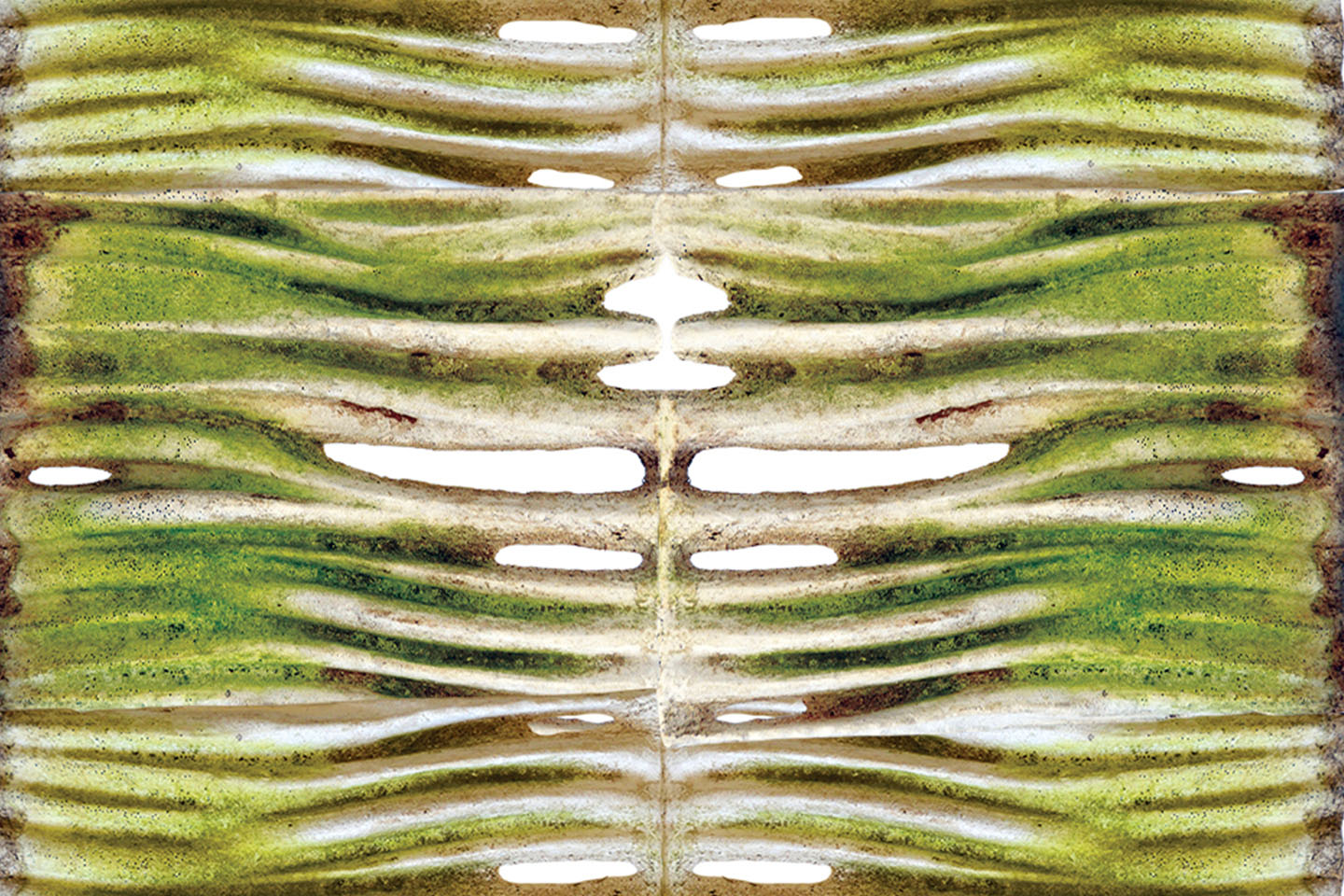Moss Regimes
| SoA CMU, Pittsburgh PA | 2018 |
| Design Research Project | Prototype |
Architecture is fundamentally part of a larger planetary ecosystem. This project argues for a fusion of natural and built environments. Moss Regimes is a prototype for a building façade system that operates like a tree trunk—a living, breathing, self-regulating system. The goal is to instrumentalize principles that expand the range of design tactics used to choreograph thermal gradients between buildings and their environment. By integrating porous ceramics with embedded moss growth, the project aims to develop a vertical ceramic modular bio-façade by exploring variables such as material porosity, surface geometry, thermoregulation, material gradients, and moss species. Moss Regimes investigates a shift from symbiotic layered systems to embedded multi-material systems. In contrast to layered façade assemblies, our approach uses inorganic building materials, surface geometry, and organic matter to create morphological variation within the ceramic surface—supporting moss rooting while preventing deeper root penetration. By leveraging the effects of complex geometry in passive heat distribution and its simultaneous capacity to collect and distribute rainwater, Moss Regimes explores gradient materiality and surface geometry in two ways: by simulating the surface’s ability to channel and capture water through its geometric configuration, and by coupling solid and porous ceramics to selectively enable or inhibit moss rooting within the surface, allowing moss growth and hydration to occur organically over time.
MOSS REGIMES, Acadia 2018 Exhibition and Proceedings

